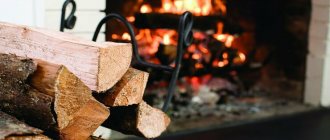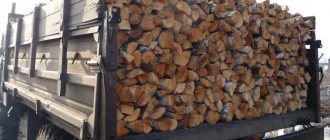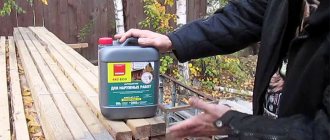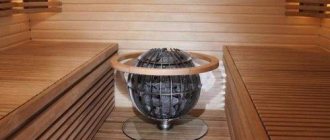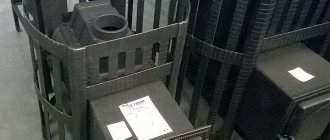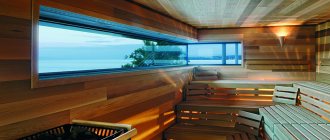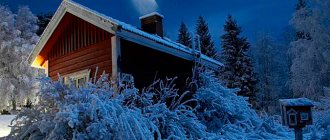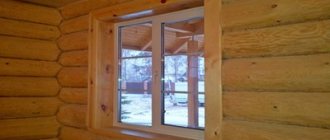Watching a burning fire is one of man’s favorite pastimes. However, in addition to purely aesthetic purposes, a burning fire can also perform a purely utilitarian task - to heat the surrounding space and other objects.
wood burning temperature
One of the most common sources of fire in country houses is ordinary firewood. Surprisingly, the burning temperature of firewood depends on the type of wood and the conditions under which it is burned. Accordingly, each of the tree species can be used for various purposes, to perform certain tasks.
Temperature threshold for combustion of wood of various species
Depending on the structure and density of wood, as well as the amount and characteristics of resins, the combustion temperature of firewood, its calorific value, and the properties of the flame depend.
If the wood is porous, it will burn very brightly and intensely, but it will not produce high combustion temperatures - the maximum value is 500 ℃. But denser wood, such as hornbeam, ash or beech, burns at a temperature of about 1000 ℃. The combustion temperature of birch (about 800 ℃), as well as oak and larch (900 ℃) is slightly lower. If we are talking about species such as spruce and pine, then they light up at approximately 620-630 ℃.
Larch
The tree is second only to oak in terms of its thermal characteristics. It’s easier to chop it, and it’s easier to light it, too. Refers to coniferous, resinous species. It does not grow in all forests, but in some places it is found quite often, and in some places it forms larch taiga.
- Fire power: 0.81de.
- Calorific value: 3062 kWh/m³.
- Combustion temperature: 865 °C.
- Burning time: long.
- Flame: smooth, has a noticeable blue tint, sparkles, and can periodically “shoot.” Smokes.
- Coals: have a long smoldering time and good heat.
- Difficulty of lighting: above average. It is somewhat easier to light larch than oak, but you still have to build a small fire before throwing the log into it.
Use of wood based on its heat capacity
When choosing a type of firewood, it is worth considering the ratio of cost and heat capacity of a particular wood. As practice shows, the best option can be considered birch firewood, which has the best balance of these indicators. If you purchase more expensive firewood, the costs will be less effective.
To heat a house with a solid fuel boiler, it is not recommended to use types of wood such as spruce, pine or fir. The fact is that in this case, the combustion temperature of the wood in the boiler will not be high enough, and a lot of soot will accumulate on the chimneys.
Firewood made from alder, aspen, linden and poplar also has low thermal efficiency due to its porous structure. In addition, sometimes during the burning process alder and some other types of firewood shoot out coals. In the case of an open furnace, such micro-explosions can lead to fires.
It is worth noting that no matter what the wood is, if it is damp, it burns worse than dry wood and does not burn completely, leaving a lot of ash.
How to simplify the choice of chimney
What is a chimney for fireplaces? This is a set of pipes, one end of which is connected to a heating device, and the other is brought outside. Its installation is a rather complex and labor-intensive process that requires certain knowledge and professionalism. Chimneys can be made of brick, stainless steel, ceramics. Each of these types has its own advantages, disadvantages, as well as installation features. Of course, in order to make the right choice, it is better to seek advice from professionals. However, in order to have some idea about the design of chimneys, we provide below a brief description of the most common types.
Heat transfer when burning wood in a stove
There is a direct relationship between the combustion temperature of wood in a stove and heat transfer - the hotter the flame, the more heat it releases into the room. The amount of thermal energy generated is influenced by various characteristics of the tree. Calculated values can be found in reference literature.
It is worth noting that all standard indicators were calculated under ideal conditions:
- the wood is well dried;
- the furnace firebox is closed;
- oxygen is supplied in clearly dosed portions to support the combustion process.
Naturally, it is impossible to create such conditions in a home oven, so less heat will be released than calculations show. Therefore, the standards will be useful only for determining the general dynamics and comparing characteristics.
Elm
Elm is often found in broad-leaved and mixed forests and can form quite large clusters. It is hard, does not chip easily, but in terms of its heat characteristics it is approximately the same as birch. Just like it, it can burn in its raw form.
- Fire power: 0.77de.
- Calorific value: 2912 kWh/m³.
- Combustion temperature: 864 °C.
- Burning time: long.
- Flame: even, smokes moderately.
- Coals: very reminiscent of birch coals - they smolder for a long time and fry well.
- Lighting difficulty: medium.
What is the combustion process
An isothermal reaction in which a certain amount of thermal energy is released is called combustion. This reaction goes through several successive stages.
In the first stage, the wood is heated by an external fire source to the ignition point. As it heats up to 120-150 ℃, the wood turns into coal, which is capable of self-ignition. Once the temperature reaches 250-350 ℃, flammable gases begin to be released - this process is called pyrolysis. At the same time, smoldering of the top layer of wood occurs, which is accompanied by white or brown smoke - these are mixed pyrolysis gases with water vapor.
At the second stage, as a result of heating, the pyrolysis gases ignite with a light yellow flame. It gradually spreads over the entire area of the wood, continuing to heat the wood.
The next stage is characterized by ignition of the wood. As a rule, for this it should warm up to 450-620 ℃. For wood to ignite, you need an external heat source that is intense enough to rapidly heat the wood and speed up the reaction.
In addition, the rate of firewood ignition is influenced by factors such as:
- craving;
- wood moisture;
- cross-section and shape of firewood, as well as their quantity in one stack;
- wood structure - loose firewood ignites faster than dense wood;
- placement of the tree relative to the air flow - horizontally or vertically.
Let's clarify some points. Since wet wood, when burning, first evaporates excess liquid, it ignites and burns much worse than dry wood. Shape also matters—ribbed and jagged logs ignite more easily and quickly than smooth, round ones.
The draft in the chimney must be sufficient to ensure the flow of oxygen and dissipate thermal energy inside the firebox to all objects located in it, but not to blow out the fire.
The fourth stage of the thermochemical reaction is a stable combustion process, which, after the outbreak of pyrolysis gases, covers all the fuel in the furnace. Combustion goes through two phases - smoldering and burning with flame.
During the smoldering process, the coal formed as a result of pyrolysis burns, while gases are released rather slowly and cannot ignite due to their low concentration. The condensation of gases as they cool produces white smoke. As wood smolders, fresh oxygen gradually penetrates, causing the reaction to further spread to the rest of the fuel. The flame occurs as a result of the combustion of pyrolysis gases, which move vertically towards the outlet.
As long as the required temperature is maintained inside the furnace, oxygen is supplied and there is unburnt fuel, the combustion process continues.
If such conditions are not maintained, then the thermochemical reaction enters the final stage - decay.
Rowan
It is often found in large quantities in forests, mainly in the form of low undergrowth, however, on the edges and clearings it can grow to significant sizes. It is often found along the banks of rivers, especially taiga ones.
Rowan wood is quite dense, comparable in weight to bird cherry. Nothing is known about the exact calorific characteristics of rowan wood. In our practice, we have repeatedly come across dry mountain ash, which burned approximately like alder, but it did not produce any special coals.
How to determine the combustion temperature in a wood-burning stove
Measuring the combustion temperature of wood in a fireplace can only be done with a pyrometer - no other measuring instruments are suitable for this.
If you do not have such a device, you can visually determine approximate indicators based on the color of the flame. Thus, a low temperature flame has a dark red color. A yellow light indicates that the temperature obtained by increasing the draft is too high, but in this case more heat is immediately evaporated through the chimney. For a stove or fireplace, the most suitable combustion temperature will be one at which the color of the flame will be yellow, such as, for example, dry birch firewood.
Modern stoves and solid fuel boilers, as well as closed fireplaces, are equipped with an air supply control system to adjust heat transfer and combustion intensity.
Video installation of a sandwich chimney with your own hands
A feature of modern sauna stoves is their heating temperature, which can reach 400 degrees. An important indicator of the efficiency of the furnace is instant heating of the body and maximum heat transfer.
The entire heating process is accompanied by the release of infrared radiation, which is distributed on surfaces adjacent to the furnace. Under the influence of high temperatures, the wooden structure of the bathhouse can char or ignite.
This is why it is so important to ensure that wooden surfaces are reliably insulated from the heat of the stove. A protective screen and lining made of fire-resistant materials are suitable for this.
Heat output of wood
In addition to the value of calorific value, that is, the amount of thermal energy released during fuel combustion, there is also the concept of heat output. This is the maximum temperature in a wood-burning stove that the flame can reach when the wood is burning intensely. This indicator also completely depends on the characteristics of the wood.
In particular, if the wood has a loose and porous structure, it burns at fairly low temperatures, producing a light, high flame, and produces fairly little heat. But dense wood, although it flares up much worse, even with a weak and low flame gives a high temperature and a large amount of thermal energy.
Cedar
In mid-latitudes it is rather rare, but in more northern regions it grows everywhere. It has soft wood and cracks well. Cedar wood is good fuel for a fire.
- Fire power: 0.70de.
- Calorific value: 2645 kWh/m³.
- Combustion temperature: ~650 °C.
- Burning time: average.
- Flame: even, may spark. Smokes.
- Coals: quite hot, medium smoldering time.
- Lighting difficulty: easy.
Humidity and combustion intensity
If the wood was recently cut down, it contains from 45 to 65% moisture, depending on the time of year and the species. Such damp wood will have a low combustion temperature in the fireplace, since a large amount of energy will be spent on evaporation of water. Consequently, heat transfer from damp wood will be quite low.
There are several ways to achieve optimal temperature in the fireplace and release enough heat energy to warm up:
- Burn twice as much fuel at a time to heat your home or cook food. This approach is fraught with significant material costs and increased accumulation of soot and condensate on the walls of the chimney and in the passages.
- Raw logs are sawn, split into small logs and placed under a shed to dry. As a rule, in 1-1.5 years, firewood loses up to 20% of moisture.
- Firewood can be purchased already well dried. Although they are somewhat more expensive, their heat transfer is much greater.
It is worth noting that the wood of raw felled poplar and some other species is completely unsuitable for use as fuel. It is loose, contains a lot of water, so when burning it produces very little heat.
At the same time, raw birch firewood has a fairly high calorific value. In addition, raw logs made from hornbeam, ash and other dense wood species are suitable for use.
Weeds
Now is the time to consider alternative types of natural fuel that can be used to fuel a campfire.
Sometimes it happens that there is no dead wood near the camp, but conscience does not allow green trees to be cut (foresters do not allow them), or there is a decent distance to them. Then you have to get out with the help of herbaceous plants. As a rule, if the area is more or less wild and open, such large species of grass as:
- Sagebrush;
- Burdock;
- Thistles, thistles and others like them;
- Blooming Sally;
- Large umbelliferae: hemlock, kupir, angelica, hogweed (including the notorious giant one);
- Cane;
- Rogoz;
- Straw;
- Sunflower stems;
- Fire power: 0.1de.
- Calorific value: 378 kWh/m³.
- Combustion temperature: 800-900 °C.
- Burning time: very short.
- Flame: even, with a characteristic crackling sound. It smokes, the less dry the material, the stronger it is.
- Coals: does not actually form.
- Difficulty of lighting: extremely low, dry weeds are excellent kindling.
If the area is marshy or borders water, then the above list is supplemented by the following plants:
In rural areas, the following options are possible:
The best thing, of course, is thick, non-hollow stems (wormwood, burdock, sunflower). All this nonsense usually dries out in the fall, stands all winter, spring and the first third of summer, then - as the green herbs grow, most of last year's dry stems rot and fall off. However, you can collect a certain amount of such “wood” for a fire at any time of the year.
Dry weeds burn quickly and hotly; they actually do not form coals, because their density is very low. For a full-fledged night fire you will need ten cubic meters and a specially trained farmhand who will constantly throw this thing into the fire. It is also possible to use ingenuity: twist the grass into dense sheaves with twine. It will burn longer.
But in order to light a mini-bonfire, for example, for boiling water, weeds are quite suitable. The only thing you need is a few stones. So that you can lay out a small fireplace and not radiate heat into space in vain, thereby increasing the efficiency of the fire.
Next are the parameters of weeds as fire fuel (during the calculations, straw indicators were used as the initial parameters).
How does draft in a stove affect combustion?
If an insufficient amount of oxygen enters the furnace firebox, the intensity and temperature of wood combustion decreases, and at the same time its heat transfer decreases. Some people prefer to cover the ash in the stove to extend the burning time of one bookmark, but as a result, the fuel burns with lower efficiency.
If wood is burned in an open fireplace, then oxygen freely enters the firebox. In this case, the draft depends mainly on the characteristics of the chimney.
Under ideal conditions, the formula for a thermochemical reaction looks something like this:
C+2H2+2O2=CO2+2H2O+Q (thermal energy).
This means that when oxygen is available, hydrogen and carbon are burned, resulting in thermal energy, water vapor and carbon dioxide.
For the maximum combustion temperature of dry fuel, about 130% of the oxygen required for combustion must enter the furnace. When the inlet dampers are closed, an excess of carbon monoxide is produced due to a lack of oxygen. Such unburnt carbon evaporates into the chimney, however, the combustion temperature inside the firebox drops and the heat transfer of the fuel is reduced.
Modern solid fuel boilers are often equipped with special heat accumulators. These devices accumulate an excessive amount of thermal energy released during fuel combustion under conditions of good traction and high efficiency. This way you can save fuel.
In the case of wood-burning stoves, there are not many opportunities to save wood, since they immediately release heat into the air. The stove itself is capable of retaining only a small amount of heat, but an iron stove is not capable of this at all - excess heat from it immediately goes into the chimney.
Thus, by increasing the draft in the furnace, it is possible to achieve an increase in the intensity of fuel combustion and its heat transfer. However, in this case, heat loss increases significantly. If you ensure slow combustion of wood in the stove, then its heat transfer will be less, and the amount of carbon monoxide will be greater.
Please note that the efficiency of the heat generator directly affects the efficiency of wood burning. Thus, a solid fuel boiler boasts 80% efficiency, and a stove – only 40%, and its design and material matter.
Functions and features of operation of a chimney in a bathhouse
The main purpose of a chimney in a steam room is high-quality and controlled removal of combustion products in order to completely eliminate the accumulation of harmful carbon dioxide and the formation of burning on surfaces. The resulting draft (with air suction into the combustion chamber) maintains a stable operation of the heat generator. By manipulating the flows, the user regulates the heating value of the furnace and fuel consumption. You can heat such a sauna stove for as long as you like, and you can steam all this time.
Features of heat distribution with different methods of connecting the heater to the chimney
The stove in the bathhouse is heated inconsistently. Accordingly, the smoke channel cools down completely between sessions, so the chimney parts experience the strongest repeated thermodynamic loads. The second important factor is operating temperature. Unlike boilers and furnaces used for heating, gases heated to 700 degrees or more are removed here. Direct-flow stoves are often used in the bathhouse; due to the lack of heating shields or water jackets that remove some of the heat, the smoke turns out to be so hot. Therefore, the problem of chimney burnout (the danger of gas contamination and fire) always remains relevant. Chimneys for bathhouse stoves are made from high-quality materials. If these are factory products, they must be approved by the manufacturer for such difficult operating conditions.
Dung
Dried (to the point of complete dehydration) cattle manure can also help a tourist out of woodlessness. Cow patties burn very well and take a long time, and they produce quite a bit of heat.
Unfortunately, it was not possible to find the exact parameters of dung as a fuel either in the literature or on the Internet, despite the fact that in many rural areas and agricultural countries it is a traditional method of heating. But they say that in terms of its characteristics, dung roughly corresponds to peat.
Prepare firewood in advance
Bring the wood into a warm room 2-3 days before lighting to increase its initial temperature.
The warmer the wood is initially, the:
- They spend less heat on their own heating and more on heating the room. You use heat more beneficially.
- Firewood reaches its optimal combustion mode faster, which further increases its calorific value and reduces the amount of soot emitted. This happens because the resin, creosote, tar, essential oils and other substances contained in wood do not burn at low temperatures and are deposited on the walls in the form of soot. And under optimal conditions, the combustion temperature is sufficient for them to burn entirely and release additional heat.
The difference between the combustion of “warm” and “cold” firewood is immediately noticeable: cold firewood produces a lot of smoke, which characterizes incomplete combustion. And warm, dry wood burns with virtually no smoke.
Ignition
Kindling is a tool that helps you quickly start a fire. With its help, even a novice “arsonist” will quickly achieve the expected result. Tourists use these means to light fires in bad weather, for example, if it is necessary to light a fire in the rain.
You can buy a fire starter at a specialty store, or you can make it yourself before you go camping. If this opportunity was successfully missed, and the dryness of the brushwood prepared for the fire leaves much to be desired, ignition can be made from scrap materials. We talked about what is best to use as ignition, how to make it at home and in natural conditions, and how to store it here.
What kind of wood is better to burn?
The heat output of the heating device and the burning time greatly depend on the type of wood.
At the molecular level, wood consists of many empty cells with walls made of woody matter. The density of this woody substance (walls) is the same for all types of wood, but the size of the cells is different.
The smaller the size of the cells, the higher the density of the wood and each square centimeter contains a lot of flammable wood matter. And vice versa: the larger the size of the cells, the lower the density of the tree. It contains a lot of air and little flammable wood matter.
Imagine that a circle is 1 square centimeter of wood. In the first case, the cells are small and there are many walls between them. In the second case, the number of cells and walls is smaller, and there are more voids filled with air. The density of such wood is low.
What conclusions can be drawn:
- Less dense wood burns quickly
. When wood burns, air is released, which fuels the combustion. The more air, the firewood burns faster and less evenly. - Dense firewood produces more heat
because it contains more combustible wood matter per unit volume. - Dense firewood leaves more coals
, which take a long time to smolder. Soft woods hold their shape less well, crumble into small coals and go out quickly.
All wood is divided into three density categories: low, medium, high.
Fire safety when working with wood
Natural material easily catches fire. Any careless act can lead to an unpleasant or dangerous situation. Wood has different combustion temperatures. It depends on the breed. But they are not too big.
To maintain safety, you must do the following:
- use wet plaster;
- use fire retardant pastes;
- do cladding;
- use varnishes, enamels;
- apply fire retardant.
This will help protect yourself when working with wood.
Proper lighting of a fire
In order for a fire to flare up quickly, even with one match, and not go out to everyone’s disappointment, it must be lit correctly.
To do this, you need to adhere to the following algorithm:
- The tinder is ignited, and from it - kindling. The stage of igniting the tinder can be bypassed if it is possible to get an open fire from which to ignite the kindling directly.
- The thinnest brushwood or wood chips are placed on the burning kindling. The result is a small, unstable fire that can easily go out, so you need to approach this stage with all responsibility.
- As the thin brushwood burns, thicker brushwood is added to the fire until coals as thick as an index finger are formed. Only after this can the fire be considered stable, since it will no longer be blown away by the wind, and its extinguished coals can be fanned.
When thick logs flare up in a huge fire, you can throw even the dampest firewood into it: it will burn without risking the fire.
The video shows such a stable fire in a winter forest:
This is the principle of lighting a starting fire. The starting fire can then be transformed into another type, more suitable for the conditions and purposes. For example, a “pioneer” fire can be successfully transformed into a “star” fire, which is more economical and allows you to cook food or boil water with less wood consumption.
conclusions
From all of the above, the following conclusions can be drawn:
Remove soot promptly
Soot needs to be removed not only when the chimney is clogged, but regularly. Soot not only impairs chimney draft, but also serves as thermal insulation. It covers the internal walls of the heating device and the heat exchanger, which reduces their heat transfer. If soot is removed in a timely manner, the volume of wood burned can be reduced without loss of heating power.
Obvious, but worth remembering: the firewood must be dry. Wet wood does not ignite well, goes out quickly and emits 2-2.5 times less heat than dry wood.
Charcoal
This type of coal is not a fossil, so it has some peculiarities in its composition. It is produced by heating dry wood to a temperature of 450-500 oC without air access. This process is called pyrolysis. During this process, a number of substances are released from the wood: methanol, acetone, acetic acid and others, after which it turns into coal. By the way, burning wood is also pyrolysis, but due to the presence of oxygen in the air, the released gases ignite. This is what determines the presence of flames during combustion.
Wood is not homogeneous; it has a lot of pores and capillaries. A similar structure is partially preserved in the coal obtained from it. For this reason, it has good adsorption capacity and is used along with activated carbon.
The humidity of this type of coal is very small (about 3%), but during long-term storage it absorbs moisture from the air and the percentage of water increases to 7-15%. The content of inorganic impurities and volatile substances is regulated by GOSTs and should be no more than 3% and 20%, respectively. The elemental composition depends on the production technology, and looks approximately like this:
- Carbon 80-92%.
- Oxygen 5-15%.
- Hydrogen 4-5%.
- Nitrogen ~0%.
- Sulfur ~0%.
The chemical formula of charcoal shows that in terms of carbon content it is close to stone, but in addition it has only a small amount of elements unnecessary for combustion (sulfur and nitrogen).
Alternatives to a campfire
Of course, it is impossible to replace a fire with one thing that would fully perform its functions without requiring fuel. However, this does not mean at all that it is impossible to do without a fire: a combination of different equipment, techniques and materials can completely replace a fire, in some cases even surpassing it in efficiency.
For example, burners can be used for cooking, which is used by tourists going on mountain hikes. Burners, of course, have their drawbacks, but compared to a fire, they do not smoke, are compact and safer in terms of fire.
In the region of the tropics and the equator, food can be cooked on sun-heated stones or sand, or you can simply take food that does not require heat treatment on a hike.
We have already spent several trips on “raw” food without any fires or burners. This practice has shown that this option is quite acceptable, especially for hiking in the warm season.
For heating in the absence of a fire, you can use special heating pads in combination with warm clothes and a sleeping bag, and in the most extreme cases, in the absence of any equipment, a pile of rotting grass: when rotting, heat is released, and the temperature of such a pile can even be higher than the temperature of the human body.
For drying wet things, ropes stretched between trees, as well as the branches of the trees and bushes themselves, on which it is convenient to weigh everything that needs to be dried, have proven themselves to be effective. In warm, dry weather, you can dry things on the go by hooking them onto your backpack. As a last resort, clothes can be dried directly on the body, but this is only permissible if the person is not in danger of hypothermia.
Lanterns are best for lighting. Compared to a fire, they are easier to carry, you can adjust the brightness, turn them on and off when needed, and use them in a tent. Flashlights are safer and easier to use.
But if you don’t have to dive underground, travel to a cave, or travel at night through a wooded area, in the absence of a fire and a flashlight, you can get by with natural lighting created by the stars and the Moon.
Even on a moonless but clear night, the light of the stars is enough to move through open areas, as evidenced by our hike along the Oleshkovsky Sands, in which instead of a compass and GPS navigator we walked at night, guided by the stars.
Special clothing and repellents will save you from blood-sucking insects. From my experience, I can say that these means of protection are significantly more effective than smoke from a fire; in addition, they are less harmful to the human body and act wherever a person goes.
If you treat your skin with a good repellent as shown in the photo, mosquitoes will not bite for 2-3 hours:
As you can see, despite the versatility of a fire as a means of survival, in some situations you can still do without it, without being particularly strained by the inconveniences that arise.
For example, on a summer weekend hike you can completely do without fires, saving time on collecting firewood, preparing a fire pit, lighting a fire, cooking food and extinguishing firebrands, as well as nerves and financial resources from a possible visit from foresters. At the same time, in an emergency situation that occurs in a winter forest in the absence of a sleeping bag, it is unlikely that it will be possible to do without a fire: heating pads sold in specialized stores in this case will be ineffective, even if they end up in the victim’s pocket, and only a well-organized fire in this case will give hope for salvation.
Author: Maxim Chechetov
Close the valve in a timely manner
The stronger the draft, the faster the wood burns. But if there is not enough air, they burn poorly and form a lot of soot. Balance is important so that the minimum amount of air necessary for combustion reaches the firewood.
- Before ignition, open the heater damper to the maximum to ensure good draft for igniting the wood.
- When the wood starts to burn, begin to gradually close the valve. If the firewood starts to go out, open the valve slightly and increase the draft. Over time, you will find the optimal valve position.
The drier and denser the wood, the less air is required to burn it.
Preheat the firebox
When wood starts to burn in a cold firebox, then:
- part of the heat is spent on heating the firebox, and not heating the room (as in the previous point).
- It is more difficult for them to flare up, since warm air overcomes the resistance of cold air in the chimney.
Basic firewood is best lit in a preheated firebox so that it does not waste extra energy heating the firebox and chimney. You can use the heat from the previous stack of firewood or pre-burn the prepared torches and paper in the firebox.
A couple of phrases about calorific value
In terms of its chemical composition, wood is a rather complex material. It contains the main components - lignin and cellulose. But besides them, the tree contains:
- resins;
- proteins;
- tannins and other ingredients.
When logs burn in a stove (or simply when trees burn in a forest), these components interact with the air at a chemical level. The calorific value of wood (as well as any fuel), or thermal conductivity, is the amount of thermal energy that a unit of weight of the fuel material (in our case, 1 kg of wood) produces during combustion. Kilocalories are used to measure quantities.
The chemical composition among most tree varieties has minimal variations, which causes differences in the number of calories emitted. That is, the heat of combustion of some types of firewood can be as follows:
- for deciduous species the figure is 4460 kcal/kg;
- for coniferous species - 4560 kcal/kg;
- for mixed breeds – 4510 kcal/kg.
As you can see, the differences are minimal. At the same time, it is easy to understand that it is better to use coniferous wood for the stove due to its greater thermal conductivity. Only firewood is supplied to the market depending on volume, not weight. That is, the main criterion for choosing firewood is cubic meters. Density plays an important role here, because the higher it is, the heavier the wood.
For example, let’s take 1 cubic meter of birch logs as a starting point. Then the ratio of the volume of different rocks will look like this:
- oak logs - 0.75 cubic meters. m;
- alder logs - 1.1 cubic meters. m;
- pine logs - 1.2 cubic meters. m;
- spruce logs - 1.3 cubic meters. m;
- aspen logs - 1.5 cubic meters. m.
That is, 1 cubic meter of birch and 0.75 cubic meters. m of oak logs, 1.1 cubic meters. m of alder wood (and so on) will produce the same amount of heat. Knowing this, now, depending on how much firewood costs, you can get profitable savings for yourself.
